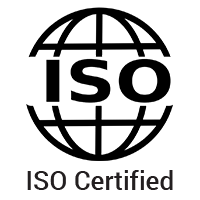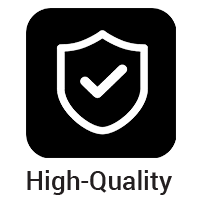Coagulation Flocculation Decantation Pilot
Categories:Coagulation Flocculation Decantation Pilot Description Coagulation Flocculation Decantation Pilot: The coagulation and flocculation processes eliminate mineral pollution under suspension or colloidal...
Product
Description
Coagulation Flocculation Decantation Pilot
Description
Coagulation Flocculation Decantation Pilot: The coagulation and flocculation processes eliminate mineral pollution under suspension or colloidal form. Separation between clear water and solids is carried out by a decanter. Physical and chemical laws explain the mechanism of these two processes. In laminar flow (stokes law) and in turbulent flow (Newton law). The decantation is the most used separation process for pollution in suspension and colloidal form. It can be directly applied on the solution to treat or after a coagulation – flocculation stage.
Teaching objectives
- To vary the volumetric flow of the sludge : (water flow) x (% decanted sludge in a given time) / horizontal surface of the decanter.
- Choice of reactant rates experimentally obtained thanks to a JarTest (not supplied in standard)
Technical specifications
- Transparent PVC flocculant feed tank.
- Transparent PVC coagulant feed tank.
- Flocculation – coagulation tank in transparent PVC (in two parts for version MP50AB and MP50ABC) and a decantation tank in Plexiglass.
- 500 litre supply tank for preparing synthetic solutions.
- Variable speed stirrer (50-2000 rpm).
- Variable speed stirrer (50-2000 rpm) with speed display (2 stirrers for version).
- Two peristaltic pumps for reactants adding.
- Sediment recycling pump.
- Feeding circulator of the product to treat.
- 4 flowmeters (for the flocculant, coagulant, feed and recirculation solutions).
- A PH measurement device, with 4-20 mA output, 2 threshold, 2 pumps with fix speed and 2 vats for the storage of acid and base solutions.
- Control panel for the pumps and their safety devices, stirrers control, timers for the reactants feed and sediment recycling.
- PVC piping and stainless steel frame with aluminium nuts.
Dimensions
- 2300 x 1000 x 2100 mm
Essential requirements
- Starch – FeCl3.
- Power supply : 220 V / single phase / 50 Hz - Consumption 500 W
quick overview :
Coagulation Flocculation Decantation Pilot
Description
Coagulation Flocculation Decantation Pilot: The coagulation and flocculation processes eliminate mineral pollution under suspension or colloidal form. Separation between clear water and solids is carried out by a decanter. Physical and chemical laws explain the mechanism of these two processes. In laminar flow (stokes law) and in turbulent flow (Newton law). The decantation is the most used separation process for pollution in suspension and colloidal form. It can be directly applied on the solution to treat or after a coagulation – flocculation stage.
Teaching objectives
- To vary the volumetric flow of the sludge : (water flow) x (% decanted sludge in a given time) / horizontal surface of the decanter.
- Choice of reactant rates experimentally obtained thanks to a JarTest (not supplied in standard)
Technical specifications
- Transparent PVC flocculant feed tank.
- Transparent PVC coagulant feed tank.
- Flocculation – coagulation tank in transparent PVC (in two parts for version MP50AB and MP50ABC) and a decantation tank in Plexiglass.
- 500 litre supply tank for preparing synthetic solutions.
- Variable speed stirrer (50-2000 rpm).
- Variable speed stirrer (50-2000 rpm) with speed display (2 stirrers for version).
- Two peristaltic pumps for reactants adding.
- Sediment recycling pump.
- Feeding circulator of the product to treat.
- 4 flowmeters (for the flocculant, coagulant, feed and recirculation solutions).
- A PH measurement device, with 4-20 mA output, 2 threshold, 2 pumps with fix speed and 2 vats for the storage of acid and base solutions.
- Control panel for the pumps and their safety devices, stirrers control, timers for the reactants feed and sediment recycling.
- PVC piping and stainless steel frame with aluminium nuts.
Dimensions
- 2300 x 1000 x 2100 mm
Essential requirements
- Starch – FeCl3.
- Power supply : 220 V / single phase / 50 Hz - Consumption 500 W
Product
Reviews
add Review
reviews
No Review Yet.














Product
Reviews
add Review
reviews
No Review Yet.